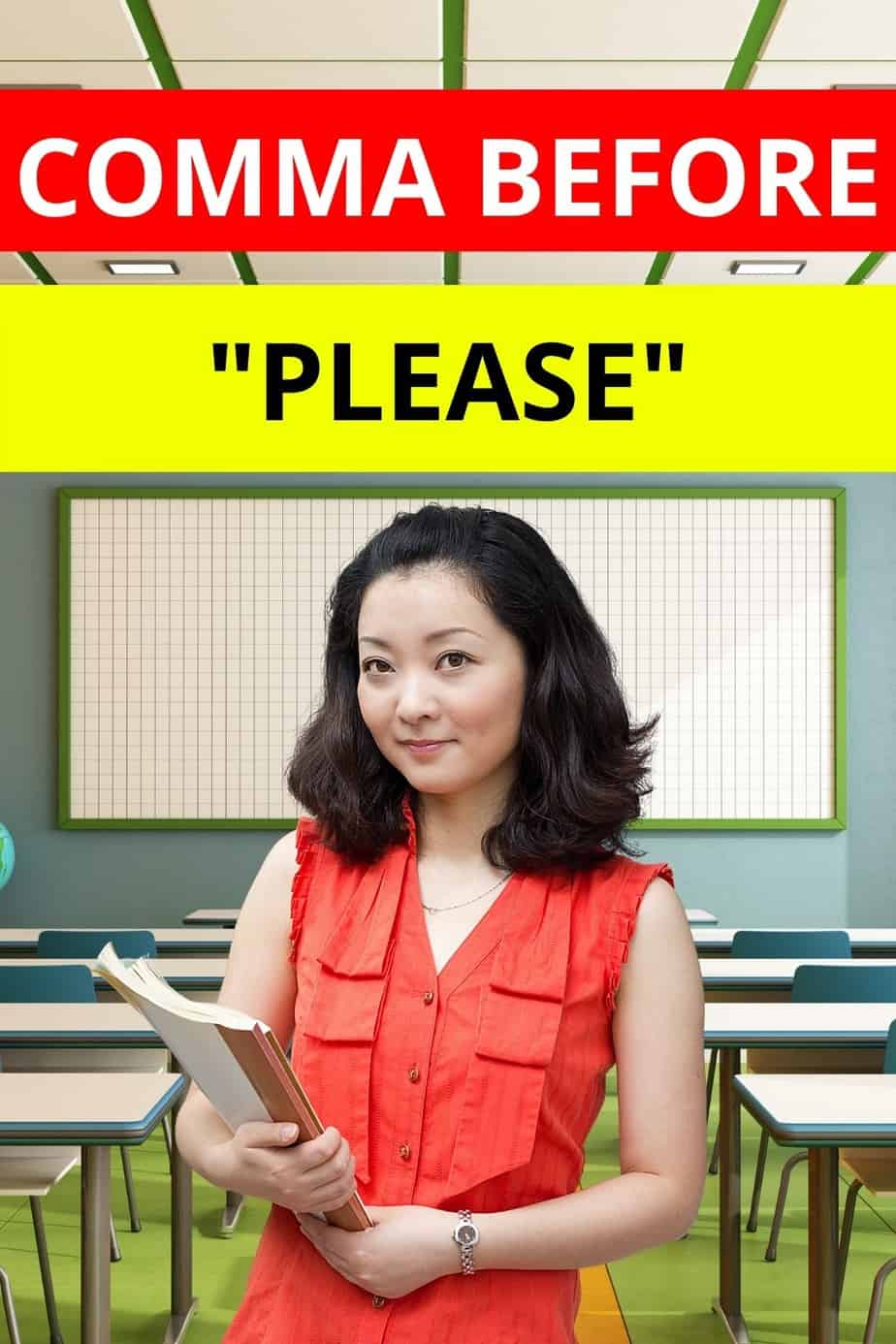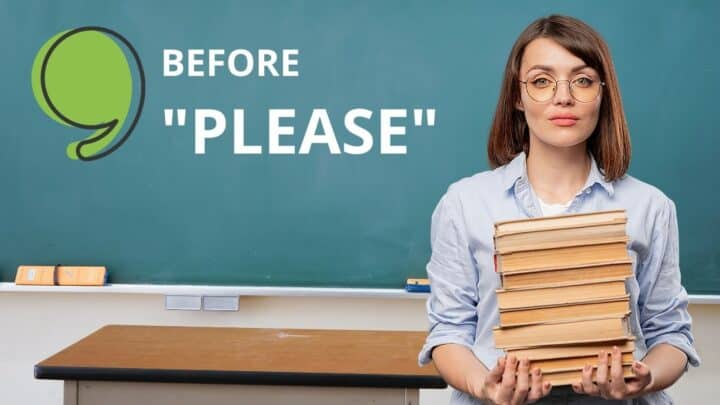When was the last time you were able to appropriately use a comma before “please?” And, when is a comma not necessary before it?
I bet these seemingly-no-brainer questions often cross your mind when writing emails or even direct messaging with an “authority figure.”
Fortunately, you’ve just reached the right site to seek some definitive answers. Thanks for landing here, by the way!
Please read until the end to get the hand of these comma-related concerns. Or should it have been “please, read until the end?”
When is a comma necessary before “please”?
One, we should always insert a comma before please when please is used in a direct address, particularly when please is either situated at the end of a sentence or after the name of the person that the message is directed to. Two, we need to place a comma whenever “please” introduces a parenthetical interruption either mid-sentence or towards the end. But, we must never put a comma before it when it is either used as a verb or adverb.
The meaning, function, and usage of “please”
“Please” can either function as an adverb, a verb, or an interjection in sentences.
As an adverb, it often pre-modifies a verb which helps in increasing the politeness of a command, turning it into a request.
Perhaps, it is even one of the very first adverbs that we learn, which also denotes one of the earliest signs of politeness in speech.
Although this is almost the most popular way to use “please,” it otherwise functions as a verb which means to induce some form of satisfaction or pleasure.
Sometimes, we may also use it as an interjection to express warning or caution when we get annoyed or surprised.
Using “please” this way is very useful in evoking emphasis, especially in imitating spoken expressions in written texts.
Stop tickling me, mom! Please
Also, “please” is very much flexible in terms of language register because it is applicable in both colloquial and formalistic contexts.
With regards to punctuation, the guidelines on its pre-comma usage are easy to digest and remember, which are elaborated in the next section.
Placing a necessary comma before “please”
Although the advent of technology has made communication effortless and punctuation rules more lenient, knowing proper writing strategies would still do more good than harm.
This means that we should not get easily tricked by how direct messaging tools make us miss out on appropriate punctuation usage.
Indeed, no one is likely going to get offended when we skip a comma or two when we chat with friends, close colleagues, or family members.
But, this habit could take its toll on us particularly when it causes innocent confusion that may lead to misinformation.
More so, negligence on proper punctuation could easily prompt criticism or prejudice from authority figures, including those who review application letters and CVs.
At this point, I hope I’ve been able to convince you as to how vital these punctuation-related decisions are.
Now, let’s try to make sense of when to punctuate “please” with a preceding comma in detail.

When “please” is used in vocative case or direct address
In grammar, the vocative case refers to the use of a direct address which can either be animate or, rarely, an inanimate being.
This strategy is simply a replication of how we use the spoken language in its most natural way in the written language form.
Commas are necessary tools in signaling the usage of a direct address in writing, that is, to particularly differentiate it from an indirect or reported speech.
Here’s an example of using a direct address in a sentence.
“Paul” is the addressee’s name and the comma after it helps a reader make sense that the message is intended for Paul himself and that a call to action is required by the message sender.
Not putting a comma after the addressee’s name converts the sentence into a story-telling mode, a reported speech, which does not prompt a command at all.
As previously mentioned, adding “please” turns a comma into a polite request, which is inoffensive, and thus, more desirable.
Therefore, a comma before “please” is mandatory when constructing a sentence in the vocative case.
The sentence structure may also be changed by placing “please” at the end, which still requires pre-comma usage.
Or, the name could be omitted because the message recipient can automatically recognize by the given context that the message is directed to him.
Automatically, the comma has to be retained in the process despite the removal of the understood presence of the addressee’s name.
This isn’t necessarily neuroscience, is it?
And now, let’s move on to what we call “parenthesis” in stylistics, which is also just like reciting your ABCs.
When “please” introduces a mid-sentence parenthetical interruption
A parenthesis is a language device that facilitates persuasion both in the spoken and written language.
When we talk, we tend to insert some additional interesting information, albeit grammatically-insignificant.
Representing these interruptive thoughts in writing entails setting off the parenthetical elements with commas to mark their removability, as well as an emphatic effect.
That said, “please” would always require a pre-comma every time it introduces a parenthetical remark in a sentence.
Also, parenthetical remarks are free from the syntactic flow of the original statement so we can use “please” in any part of speech in this structure.
Let’s look at an example sentence using “please” midway as a parenthetical item.
Here’s another example in a more formal context.
Not using commas in offsetting parenthetical elements can easily disrupt comprehension on the reader’s side, which is why they are inarguably important in the sentence above.
When “please” introduces a mid-sentence parenthetical interruption
Lastly, a parenthesis may also be attached towards the end of the sentence which still requires pre-comma usage.
And, the logic of doing so is just the same as in the previous subsection.
Also note that the sentence above may also be written in other structures to prevent it from being a run-on sentence.
Or, by enclosing the parenthetical remark with open and close parenthesis or square brackets.
Obviously enough, the parenthetical use of “please” is not as common as using it in a vocative case.
So, I’d like to conclude this section by saying that the most common pre-comma usage particularly happens when “please” is used in a vocative case.
The incorrect comma before “please”
To completely make sense of this post, it’s also important that we understand when putting a comma before “please” becomes incorrect.
These instances are when “please” is used as a verb, which is quite obvious, and when we use the word as an adverb to pre-modify a verb at the beginning of the sentence.
When “please” functions as a verb
“Please” can also be used as a verb in sentences which means to satisfy or give pleasure to another animate being.
A pre-comma would make the next sentence ungrammatical since “please” is used as part of the main verb in it.
Or, it can also be used at the end of a sentence to still mean the same way.
The last sentence simply means “do whatever you want” or “do whatever makes you happy.”
When “please” functions as an adverb that pre-modifies a verb at the beginning of the sentence
We can pre-modify verbs by putting “please” at the beginning of the sentence, which is the most common way of using the word.
This usage is equivalent to how we use “kindly” in sentences.
We may also state our request in a question form such as in the following sentence.
The request above is quite paradoxical since it’s making use of a polite request in asking someone to be gone from the scene.
Therefore, context is required to fully understand the intention of the statement.
Actually, putting a comma around “please” is also possible in the last example.
The only difference it would make is the emphasis, which would meanwhile change the tone of the question and turn it into a more assertive one.
Frequently Asked Questions on “Comma Before Please”
When should we put a comma before “please let me know?”
A comma before “please let me know” should be necessary when it is used in a vocative case, which is also known as a direct address. Put a comma before “please” if it is used this way: “John, please let me know when I can call you.”

Hey fellow Linguaholics! It’s me, Marcel. I am the proud owner of linguaholic.com. Languages have always been my passion and I have studied Linguistics, Computational Linguistics and Sinology at the University of Zurich. It is my utmost pleasure to share with all of you guys what I know about languages and linguistics in general.

